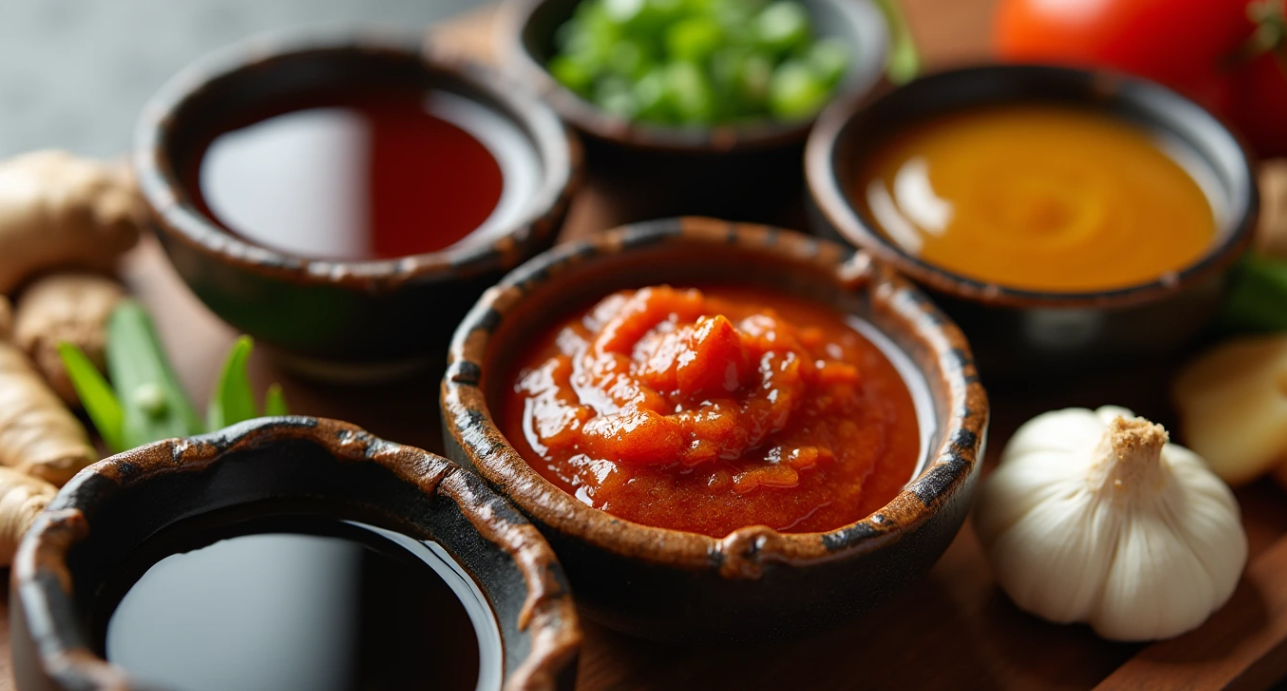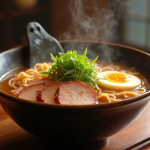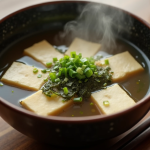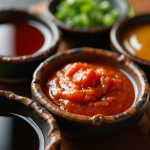Japanese food is known for its clean flavors and perfect balance. But what really brings it to life? The sauces. From the salty depth of soy to the bright citrus of ponzu, Japanese sauces do more than season—they define the dish.
This guide breaks down the most essential Japanese sauces. You’ll learn what they are, how they’re used, and which ones to try in your own kitchen. Whether you’re into sushi, noodles, or grilled dishes, this article will help you choose the right sauce every time.
Soy Sauce (Shoyu): The Essential Base
Soy sauce is Japan’s most widely used seasoning. It’s dark, salty, and full of umami. Made from soybeans, wheat, salt, and koji (a fermentation starter), it has a deep flavor that works in almost any dish.
There are several types:
- Koikuchi: the standard dark soy sauce used in most dishes
- Usukuchi: lighter in color but saltier in taste
- Tamari: usually gluten-free, thicker, and more intense
- Saishikomi: double-brewed and richer, often used for dipping sashimi
Use soy sauce in marinades, stir-fries, rice bowls, and soups. It’s also the base for many other Japanese sauces.
Popular dishes: Sushi, gyoza, yakitori, ramen
Miso: Fermented Depth in a Spoon
Miso isn’t exactly a sauce, but it’s used like one in many dishes. It’s a fermented paste made from soybeans and rice or barley. The flavor depends on how long it ferments and what it’s mixed with.
Common types:
- Shiro (white) miso: mild and slightly sweet, good for soups and dressings
- Aka (red) miso: stronger and saltier, often used in stews
- Awase miso: a mix of white and red, great all-purpose option
Miso adds rich umami and works in broths, sauces, and marinades. It’s also great for glazing vegetables or fish.
Fun fact: Japan produces over 400,000 tons of miso every year, with hundreds of local varieties.
Ponzu: Tangy, Light, and Refreshing
Ponzu sauce is citrusy, savory, and slightly sour. It’s made from soy sauce, rice vinegar, yuzu or lemon juice, and dashi (a type of broth). The result is a sauce that cuts through oily or rich foods.
Ponzu is often served cold. It’s great for dipping shabu-shabu (thinly sliced hot pot meat), drizzling over grilled fish, or adding to salads.
Try this at home:
Mix soy sauce, lemon juice, rice vinegar, a dash of mirin, and a bit of bonito flakes. Let it sit for an hour, then strain.
Teriyaki: Sweet Meets Savory
Teriyaki sauce is one of Japan’s most famous exports. It’s sweet, salty, and sticky. Traditionally, it’s made from soy sauce, sake, mirin, and sugar, simmered until thick.
In Japan, “teriyaki” refers to a cooking style—grilling with a shiny glaze. The sauce adds depth to meats, seafood, or vegetables. You can use it as a marinade or brush it on during cooking.
Tip: Homemade teriyaki has better flavor than most bottled versions and is easy to make.
Great pairings: Chicken, salmon, tofu, eggplant
Tonkatsu Sauce: Bold and Fruity
Tonkatsu sauce is thick, tangy, and slightly sweet. It’s usually served with deep-fried pork cutlets (tonkatsu), but works well with other fried foods.
This sauce is made from a blend of fruits, vegetables, soy sauce, vinegar, and spices. Its flavor is similar to a mild BBQ sauce with a fruity twist.
It goes well with anything crispy and savory—croquettes, sandwiches, or fries.
Fun fact: The most popular brand, Bull-Dog, has been making tonkatsu sauce since 1902.
Beyond the Basics: Other Unique Sauces
Japan has many lesser-known sauces worth trying:
Yuzu Kosho
A spicy paste made from yuzu zest, chili peppers, and salt. It’s used like a hot sauce—just a dab adds a citrusy kick to grilled meats or soups.
Goma Dare
A sesame-based sauce with a nutty, creamy flavor. Perfect for cold noodles, salads, or dipping.
Wasabi Sauce
Not the same as wasabi paste. This sauce is usually milder and balanced with soy or mayonnaise.
Umami-Boosters
Many chefs add dashi or kombu (kelp) extract to sauces to boost flavor naturally. These ingredients aren’t sauces themselves but enhance almost any base.
Which Sauce Fits Which Dish?
Here’s a quick reference:
| Dish Type | Recommended Sauce |
| Sushi / Sashimi | Soy, Ponzu |
| Grilled Meat | Teriyaki, Yuzu Kosho |
| Fried Food | Tonkatsu Sauce |
| Soups | Miso |
| Noodles | Goma Dare, Soy |
| Salads | Ponzu, Miso Dressing |
Experiment with combinations. Miso + sesame? Delicious. Soy + citrus? Always works.
How to Store Japanese Sauces
- Soy sauce: Keep in a cool, dark place. Refrigeration helps maintain flavor.
- Miso paste: Must be refrigerated. Lasts several months after opening.
- Ponzu, tonkatsu, and teriyaki sauces: Store in the fridge once opened.
- Homemade sauces: Best used within 1–2 weeks.
Final Thoughts
Japanese sauces are more than condiments. They shape the flavor of each meal and bring out the best in every ingredient. From everyday soy sauce to bold tonkatsu and refreshing ponzu, there’s a sauce for every mood and dish.
If you’re exploring Japanese cooking at home, start with the basics. Try new combinations. And most of all—taste often.





